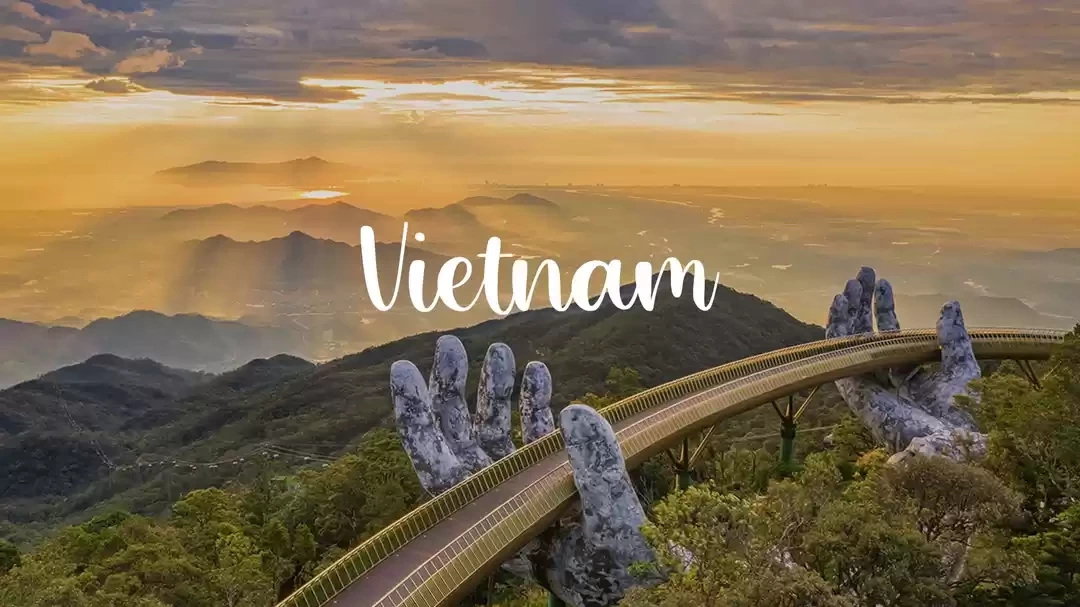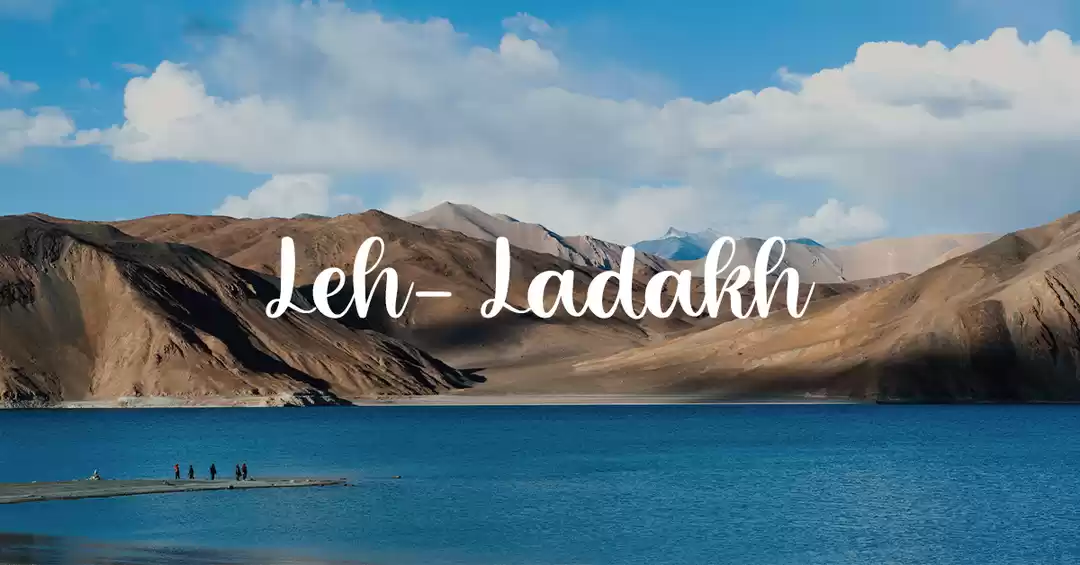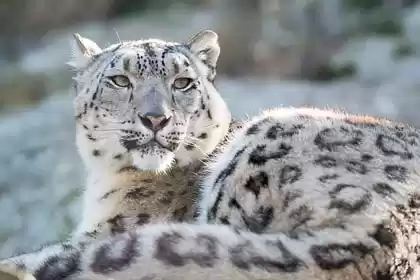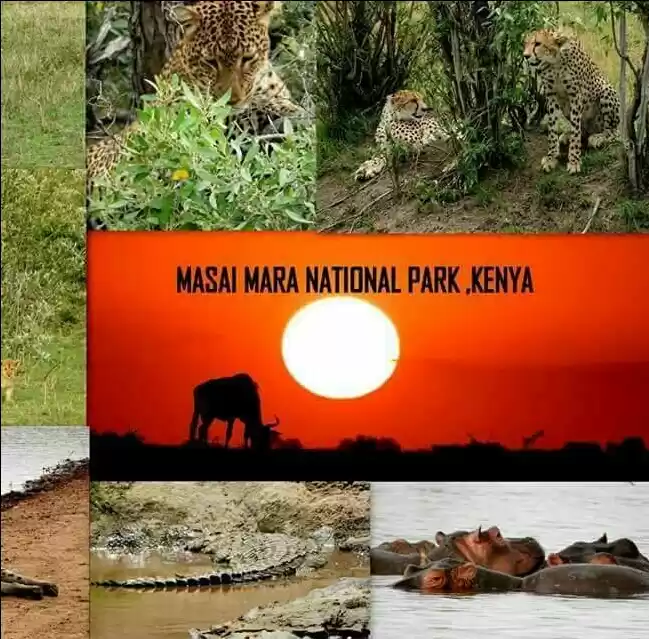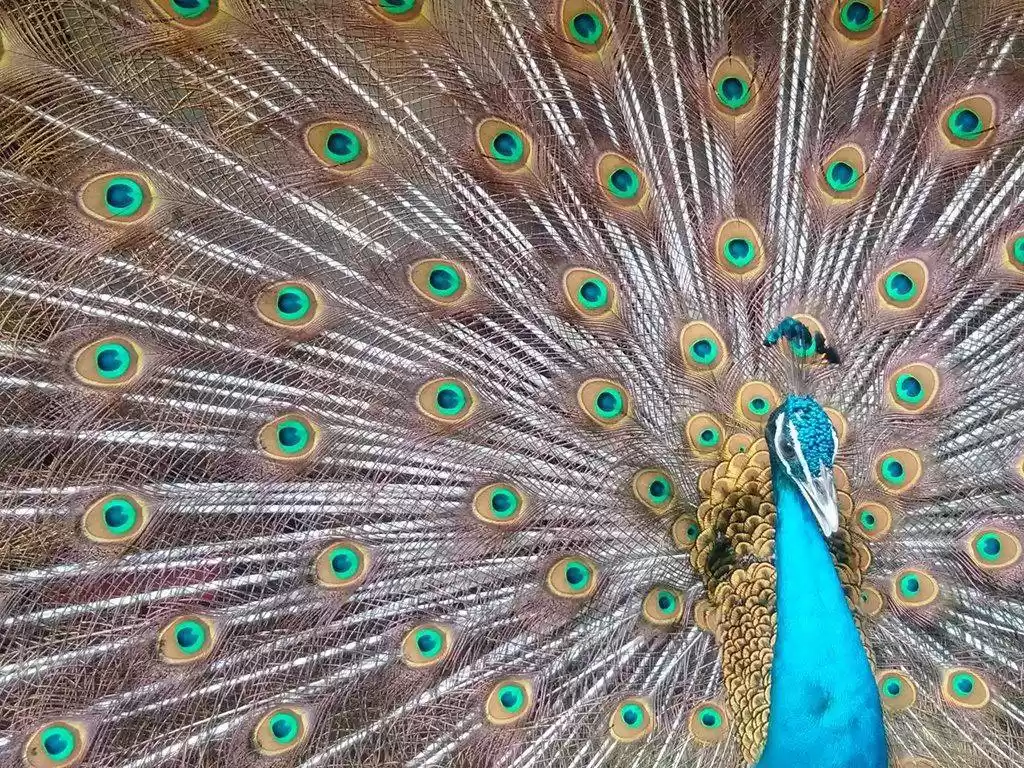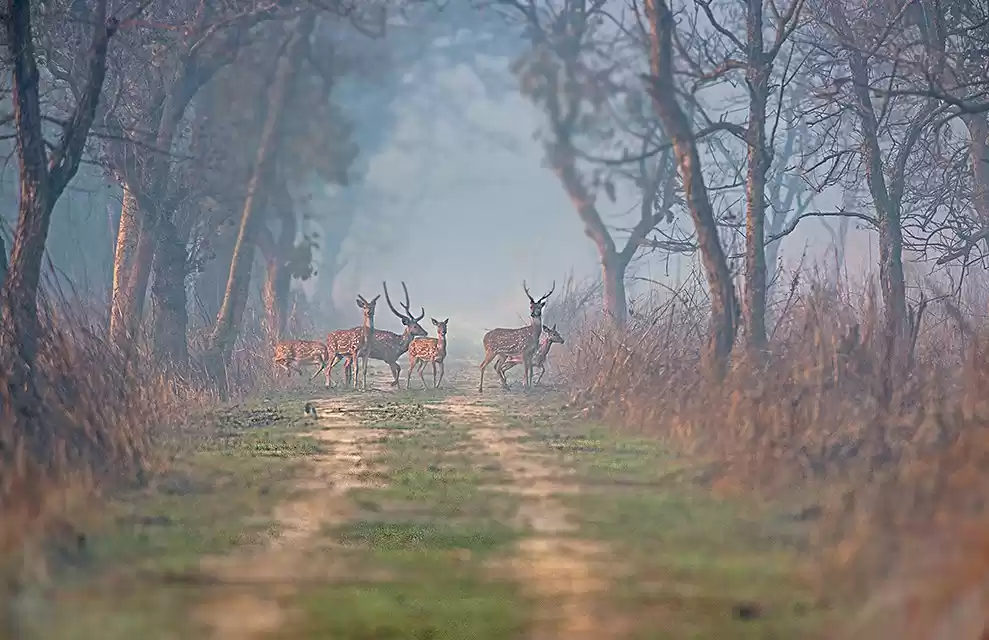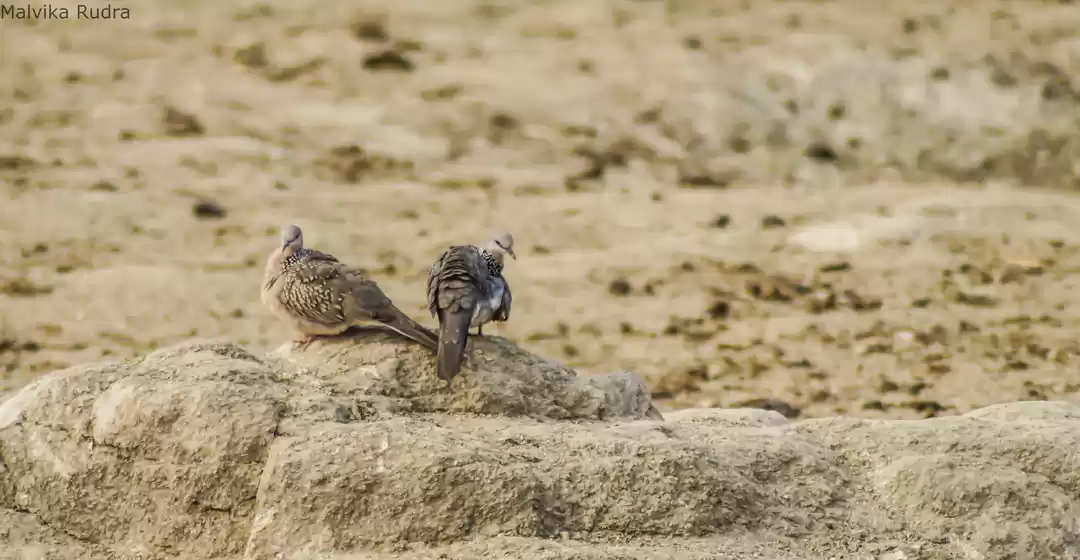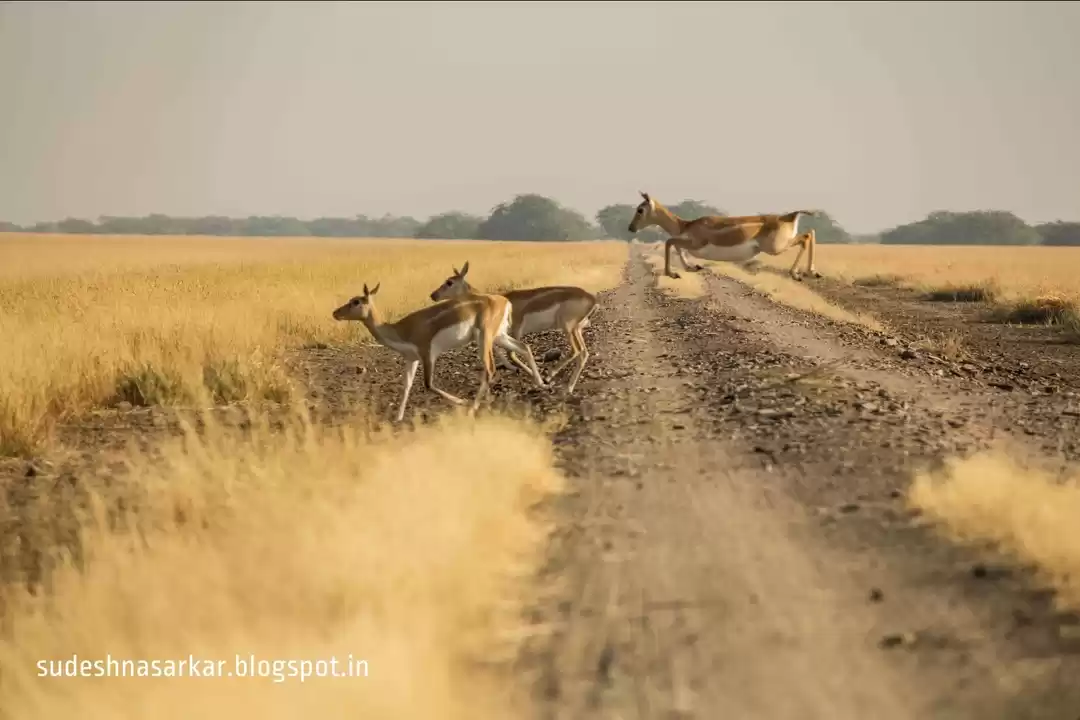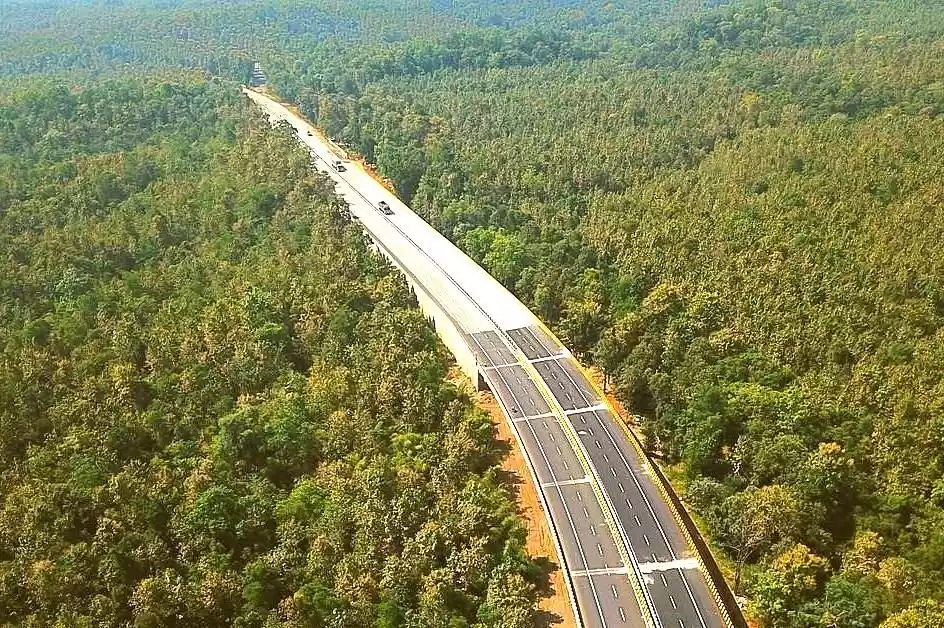'The buck stops here!', as I first came across the corkscrew-shaped horn under molten golden sunlight in the rugged ecosystem dotted with open grassland, I knew that I would return again with that affirmation. Full of Eucalyptus and Earleaf acacia, known as Akashmoni in Bengali, Jayamangali has been a pristine discovery in Karnataka-Andhra border few years ago where I came across this endangered horned animal in its full glory - blackbuck, the fastest running wild animal of India who can clock and sustain speeds of 80 km/h, so much so that Mughal emperor Akbar kept Asiatic Cheetahs for hunting Indian gazelle and blackbuck when Cheetahs roamed from the Indian subcontinent to the shores of the Red sea and throughout Africa. With both conversant in habitat of low rugged hill and rocky tracts, bordering on wastelands and terrain with tall grasses, Akbar took it upon himself to train the fastest land animal on earth (Cheetah) to hunt antelopes.
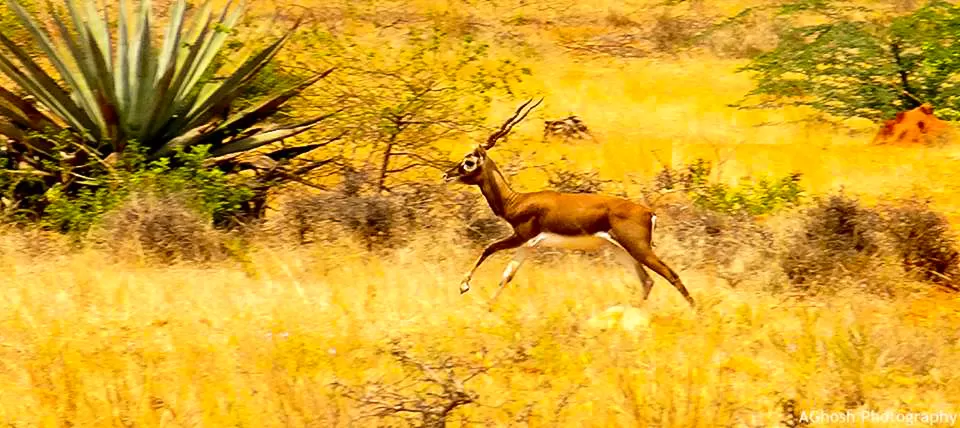
In the beginning of the eighteenth century, during the reign of the Maharana Sangram Singh, naturalistic paintings were made to commemorate hunt of the previous century with portrait of Shah Jahan on the horseback while his trained Cheetah making a kill of blackbuck, the only predator they cannot possibly outrun. And yet, juveniles and ill old ones get preyed by Indian gray wolves, golden jackals and even stray dogs. With their anxious disposition and underdeveloped sense of smell and sound, blackbucks need to heavily rely on their eyesight for survival. So abundant still was their presence in India that Emperor Jahangir while travelling to Agra from Delhi never lost sight of this animal. However, widespread habitat destruction and poaching made their condition extremely worrisome over the time.
The earliest mention of blackbuck is dated from 1900 BCE, where its long twirling horns were depicted on a shallow earthen dish of Late Harappan period. McIntosh and Van der Geer suggested that blackbuck might have been a source of food in the Indus Valley civilization (3300-1700 BC) and bone remains of blackbuck have been discovered in sites such as Dholavira and Mehrgarh. With a small population now surviving in arid Nepal plains and only an introduced population in Pakistan where it became extinct as a free-ranging animal, nearly 95% of natural blackbuck population are found in India, which is just 1% of its original population!
In the agriculture-dominated landscape of Deccan Plateau, measures were taken to protect this then near-threatened species and the conservation centre at erstwhile Mydanahalli, Jayamangali Blackbuck Reserve, is a testimony of that effort. Good news is currently they are moved to the 'Least Concern' category in IUCN (International Union for Conservation of Nature and Natural Resources) list. And they are not restricted to Mydanahalli alone. Listed as a Schedule I species under the Wildlife Protection Act, blackbucks here roam around 26 surrounding villages for food and fodder.
Jayamangali has the largest contiguous population of blackbuck in Karnataka apart from Ranebennur Blackbuck Sanctuary, which is also inhabited by the highly endangered Great Indian Bustard. Except in Thar desert where blackbuck is not found, the distribution of blackbuck more or less overlaps with this large bird. Villagers claim that they have seen Great Indian Bustard in Jayamangali in the past, but no conclusive evidence has been found. Be that as it may, we were welcomed by morning chorus of Shrikes, Indian Rollers, Indian Silverbills, Ashy-crowned Sparrow-larks as soon as we started approaching the grassland.
6:46 AM was the expected sunrise and we reached the locality 15 minutes before. So instead of approaching further to get in through the muddy track, we took time to get down from the car and enjoy hot tea from a roadside stall as we watched flocks of Grey Babblers and Laughing Doves fidgeting their way out from various trees.
It was amazingly soothing for the senses amidst chill to feel and see the jungle coming alive bit by bit from the envelope of sheer darkness through warm crepuscular rays. The birds became chirpier for a moment, the trees turned from spectre to spectacle and the whole atmosphere vibrated with a glimmer of hope.
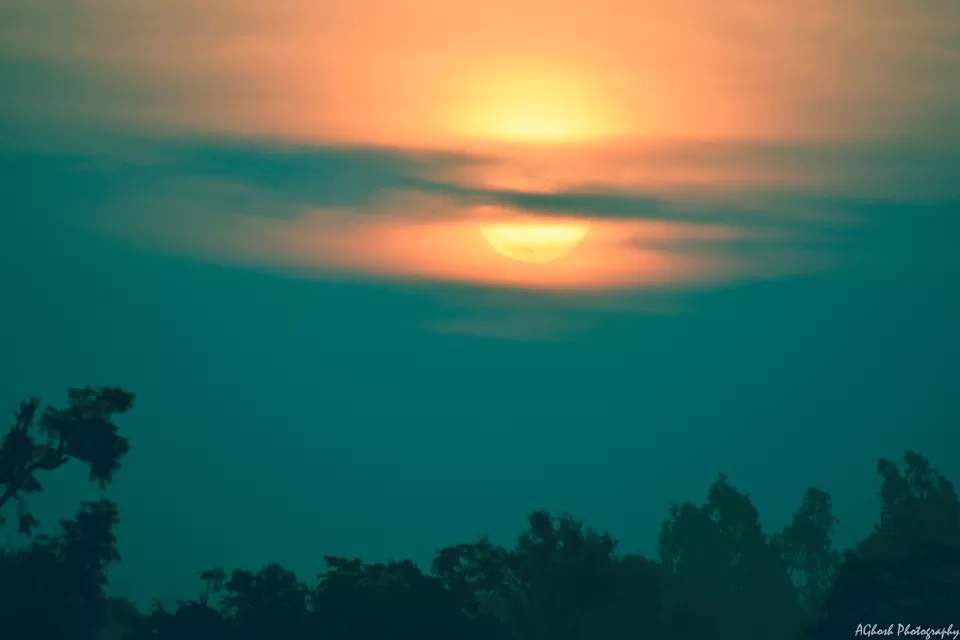
We needed to take the same car inside as no forest vehicle, guides or safari option are available here. This time I didn't even find a guard at the entrance. There was nobody to ask for any entrance fee or camera charges. I am not sure whether this is due to the pandemic. In the total absence of any formalities, it became altogether more easy to just indulge our senses in nature. We again got down to bask in its early glory. I told the driver to slowly follow us as we intended to walk on the forest track. I saw both of my friends' faces beaming with wonder and joy. Nobody's talking, everyone got lost to admire everything from the top canopy to ground flora while the collective hum of arboreal species was creating music.
And just like that. it was a new day! I look at the forest floor to see one community of living organisms replacing the other. I think, for a moment, we all forgot about blackbuck sighting.
No 'chase a target' mindset works in forest if one has to take in its natural essence with heart's content. Our to-do lists could wait! A different kind of reverence and trance-like state had set in. Even while in a group, we all started meandering in different directions of our own accord for sometime by the pull of its wild beauty. A friend who always vouch for not being ever able to practice meditation turned unconsciously meditative! This is the magic of forest.
The trees, the trail, the leaves, the sun - we were soaking it all in from all directions just like this Eurasian Hoopoe, considered sacred in ancient Egypt and known for its fascination for sun-bathing.
I observed a Long-tailed Shrike (rufous-backed shrike) sitting quietly on a dried up branch, perhaps pondering about capturing a flying insect or a small snake for today's breakfast. 14 different species of snakes have been recorded here along with 125 different species of birds.
This Ashy Prinia decided to keep things lively with tee-tee-tee call. We were smiling without knowing not why.
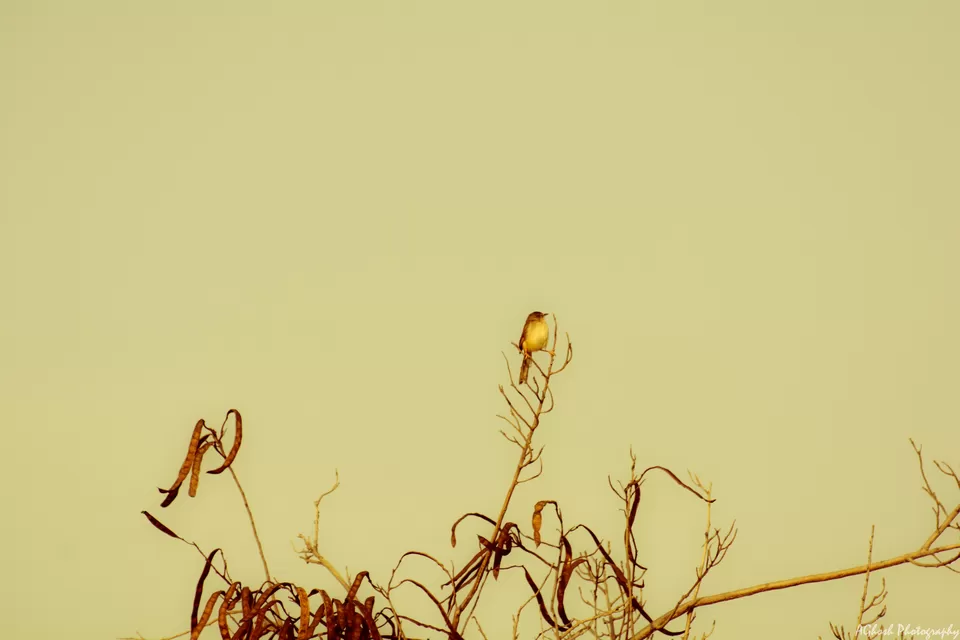
A solitary Laughing Dove was intently looking at the ground from atop, perhaps setting sight on some plant for seeds. The mauve-pink patch around its neck looked sublime.
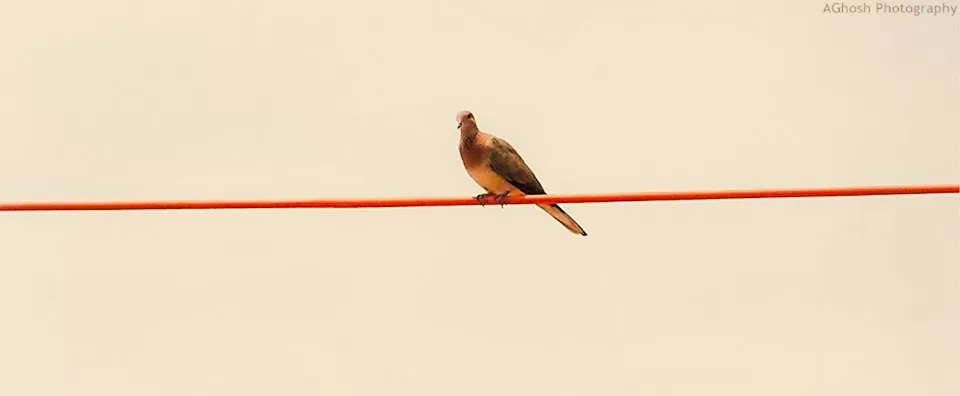
A stocky Indian Roller was also perching on a neghbouring wire. We came across Black Drongos aplenty nearby.

A pair of Red-vented Bulbul looked at us while stopping to feed on their diet of fruits and insects.
Suddenly temperature dropped as mist has engulfed the surrounding. Everything was turning into a muted blur. As if earth was exhaling early morning breath! Breathe in, breathe out...now, let go of who you are, and become who you can be!
A distant wind picked up the translucent current. Last night's troubled sleep stood in seaming defeat in front of this cold gray air which took away the last twinge of tiredness from my face. As imagination got drawn to a nebulous distance, we were oblivion of the fact that we were being watched all along. They always got to watch us before we 'spot' them.
Blackbucks! A juvenile and fawn were looking at us through soft wreaths of misty silver while another fawn (one outside the frame) was grazing on the low grasses. The mature males only have the dark brown/black and white colour contrast in their coats, while females and juveniles come with caramel colour or light yellowish tan. Females are also lightweight in comparison and some of them can develop spirally-twisted horns like their male counterparts, but generally females don't have horns. Males have horns that are diverging, cylindrical, spiral, and ringed throughout. Even the few females that have horns lack the rings and spirals that characterize the male blackbuck horns. They possess a short tail which is compressed.
Rutting peaks are coming, I murmured in my mind, though they breed throughout the year. Males mark territories by rubbing black secretions from facial scent glands onto vegetation as well as using dung middens and urine.
We got to see faraway glimpses of two males on the other side of the track.
To read the rest of the photostory, visit https://www.photostory.online/post/sojourn-at-jayamangali-blackbuck-conservation-reserve
--------------------------------------------------------------------------------------------
My Website: https://www.photostory.online/
A Storytelling & Photoblogging Website.
©All photographs and content used in this website are captured and created by me, unless otherwise specified. Any unauthorized usage and/or duplication/modification of any photo and/or content without explicit permission from this website’s owner/designer/photographer/writer (i.e. Amrita Ghosh) are strictly prohibited and will be treated as copyright infringement and plagiarism (Darkroom is Protected by Section 13 of Copyright Act, 1957). Feel free to share any content and links of any of the photographs, provided the complete and unambiguous credit is given to Darkroom, My Photostories.
--------------------------------------------------------------------------------------------
Social:
https://www.instagram.com/darkroom.myphotostories/
https://www.facebook.com/darkroommyphotostories
https://twitter.com/DPhotoStories
--------------------------------------------------------------------------------------------
PhotoStory Date: 16.01.2020
Place: Jayamangali Blackbuck Conservation Reserve, Tumkur, Karnataka
Words and Photograph: Amrita Ghosh
Visit https://www.photostory.online/blog for my other stories.








